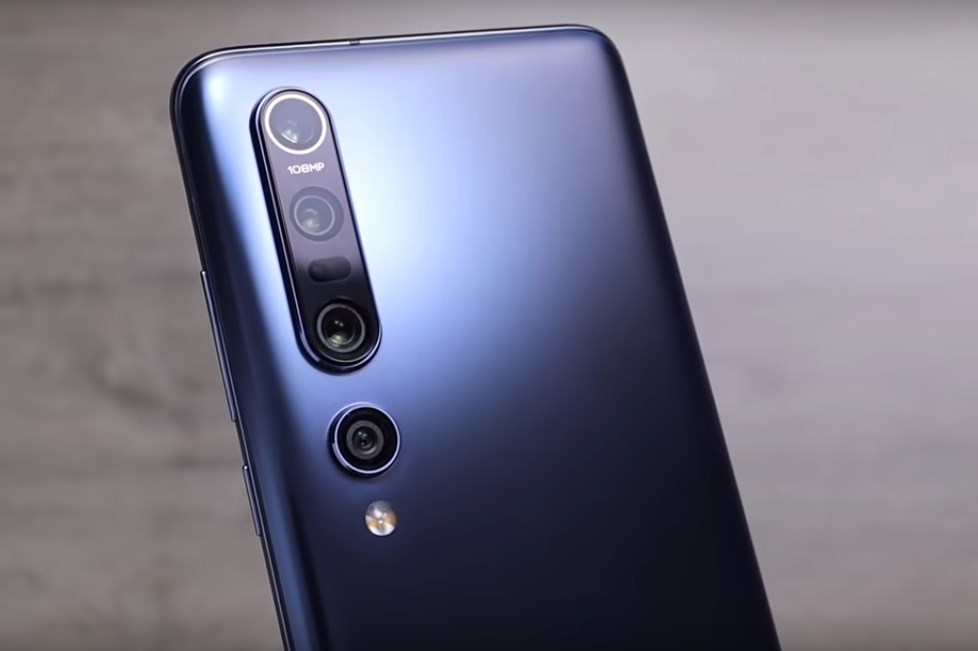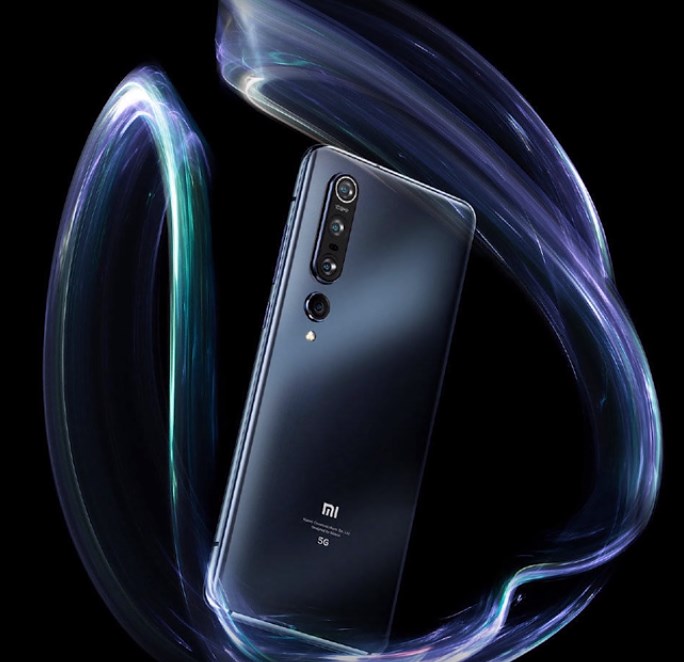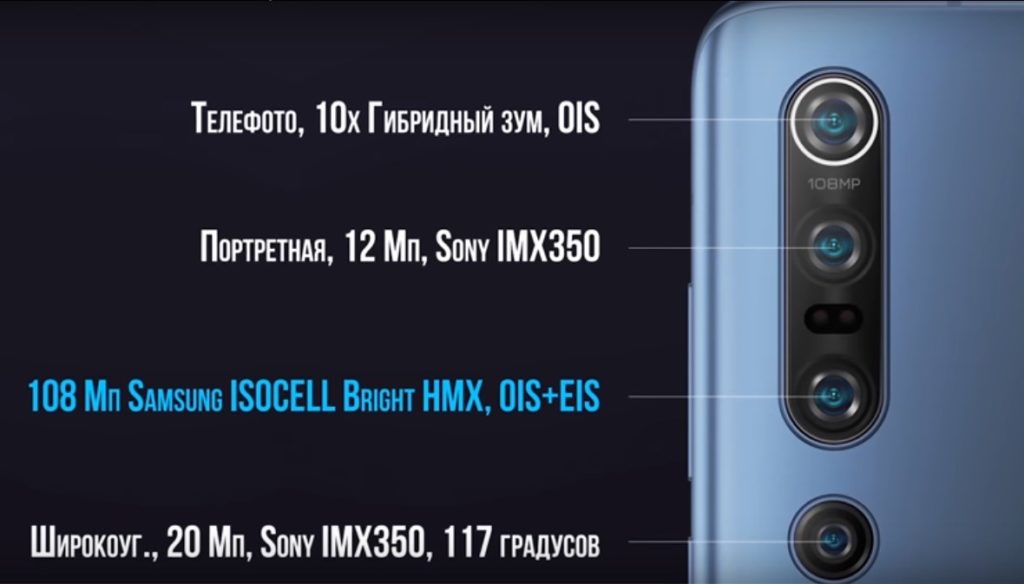Review of the smartphone Xiaomi Mi 10 Pro 5G with the main characteristics

Xiaomi smartphones are highly popular not only in China, but also abroad. First of all, due to the good quality and low cost. Most recently, the manufacturer showed off the new Mi 10 Pro and Mi 10 models on the Chinese social network Weibo, which were officially presented to the general public on February 13, but the coronavirus made its own adjustments, and the presentation had to be held not as planned, but in the format of a video conference.
The global presentation of Xiaomi flagship smartphones will take place on February 23 at the MWC international exhibition in Barcelona, which will bring together the best manufacturers of the mobile industry.
It should be noted that the new generation devices will use the HEIF (High Effeciency Image Format) image storage format, which replaced JPEG, due to effective image compression without loss of quality, saving space on the phone (the size is reduced by three times).

Specifications
| Parameters | Specifications |
|---|---|
| operating system | Android 10.0; MIUI 11 |
| CPU | Qualcomm SM8250 Snapdragon 865 |
| RAM | LPDDR5 |
| Graphic arts | Adreno 650 |
| Memory | 256 GB and 8 GB RAM |
| 256 GB and 12 GB RAM | |
| 512 GB and 12 GB of RAM | |
| Main camera (quad) | 108 MP |
| 20 MP | |
| 12 MP | |
| 8 MP | |
| Front camera | 20 MP |
| Display | Type: Super AMOLED |
| Size: 6.67 "; 109.2 cm2 | |
| Resolution: 1080 x 2340 px | |
| Sensors | The fingerprint scanner |
| Gyroscope | |
| Compass | |
| Barometer | |
| Lighting | |
| Approximations | |
| Accelerometer | |
| Gravity | |
| Battery capacity | 4500 mAh |
| Net | GSM / CDMA / HSPA / LTE / 5G |
| SIM card | Dual SIM (nano) |
| Body material | Aluminium alloy |
| The size | 74.8 x 162.4 x 9.0mm |
| Weight | 208 g |
| Colour | Pearl white and star blue |
| The cost | about 660 EUR |
Design

In the official teaser, both flagship models Mi 10 and Mi 10 Pro were presented, which will be equipped with a front camera located in the right corner of the device, which looks rather unusual. Although, at the same time, the question is brewing, why did the manufacturers take such a step, because the front-end takes a useful part on the display, just in the place that is usually used for notifications. The appearance of the device looks quite harmonious due to the display curved to the edges and rounded ends, and the material of the case, and the glass used in combination with it, makes it look attractive and stylish.
On the back side there are three sensors of the quadruple camera in one block and a little lower, below it there is a fourth sensor located separately. In the Mi 10 Pro, laser and phase detection sensors are installed between the second and third lenses. An LED flash is located under the last camera sensor.
Display

The screen on Xiaomi Mi 10 Pro is represented by a sensor with a 6.67-inch diagonal version using an active matrix on organic LEDs - Super Amoled, and a resolution of 1080 x 2340 pixels. The use of this technology improves the usability of the device in the sun, increases the brightness of the image clarity and allows you to reduce the thickness of the display.Samsung's Super Amoled technology saves battery power by reducing screen brightness to a minimum while maintaining contrast and brightness across multiple viewing angles.
The color depth reaches 16 bits at a refresh rate of 90 Hz and a sensor refresh rate of 190 Hz. It is worth noting that the predecessor, the Mi 9 Pro, had a color depth of 8 bits. The display is made of curved Gorilla Glass 5 from Corning with a 2.5D effect. This ultra-strong glass not only looks spectacular and beautiful, but is also shock-resistant and remains unharmed in 80% of cases when the phone is dropped from a height of 1.6 m. The surface of smartphone usage is 89.8%, which is quite a high figure. In the previous year, the leading step in terms of surface area was occupied by Xiaomi mi Mix with 84.0%.
Camera
If we compare both Xiaomi flagship devices in 2024, then definitely, both have powerful cameras, but Mi 10 Pro bypasses its counterpart in these parameters, in principle? this was expected. So, the front camera of the Mi 10 is represented by a 20 MP Samsung S5K3T2 sensor, and the main camera is represented by four sensors:
- Resolution 108 MP, with the matrix model Samsung Bright S5KHMX, like the Xiaomi mi Note 10 Pro;
- Resolution 13 MP, the sensor has a wide-angle connection to the lens;
- Resolution 2 MP, portrait mode sensor;
- Resolution 2 MP, the sensor is used for macro photography or depth analysis.
The flagship camera of 2024 - Xiaomi mi 10 Pro consists of four main sensors and two additional ones.

Basic camera sensors
- The first and main sensor from Samsung Bright S5KHMX has a resolution of 108 MP, aka ISOCELL BRIGHT HMX with 8 lenses. It was developed jointly by Xiaomi and Samsung specialists. The first smartphone on which a powerful camera was installed was Xiaomi mi Mix 4. The resolution of the finished picture taken with such a camera is 12032x9024 pixels, which is equivalent to the quality of shooting with a SLR camera. The format sensor is 1 / 1.33 inch and the cell size is 0.8 μm. The camera supports Tetracell technology, which allows you to combine several neighboring pixels into one, thereby suppressing noise, increasing dynamics and light sensitivity. That is, with insufficient light, this sensor will be able to capture even more light. Support for Smart-ISO technology allows you to make the correct selection of light sensitivity values depending on the environment;
- The next wide-angle lens sensor is the Sony IMX350 Exmor RS matrix with 20-megapixel resolution and 5120x3840 pixels, with a capture angle of 117 degrees and 6 lenses. In this case, the sensor size is 1 / 2.8 inches, and the pixel size is 1.00 microns. Phase focus and optical stabilization are absent. CMOS technology used in the production of matrices of this type consists in moving the electronic component of the matrix to the lower layer, which ultimately made it possible to increase the light sensitivity and increase the physical size of the pixels;
- The third sensor 12-megapixel Samsung S5K2L7 is used as a telephoto lens and when you enable portrait mode, has 6 lenses and is equipped with Dual Pixel autofocus technology, which improves image clarity. The sensor size is 1 / 2.6 inches and the pixel size is 1.40 µm. The matrix is made using ISOCELL technology, which increases the quality of the picture by controlling the absorption of electrons and increasing the light sensitivity, even in low visibility conditions;
- The fourth sensor is an 8 MP telephoto lens with an Omnivision OV08A10 image sensor, which measures 1 / 4.4 inches and has a pixel size of 1.00 μm. There are 5 lenses and 50x digital zoom and 10x hybrid zoom. The Omnivision OV08A10 matrix uses PureCel technology, which in low visibility conditions, if necessary, increases the power consumption and automatically increases the level of light sensitivity of the sensor. At the same time, it improves color rendition and reduces color noise, and in dynamic ranges - reduces noise.
Additional camera features
- Laser sensor - the principle of operation is based on illuminating an object with a laser and measuring the distance from the phone to the object itself. The advantage is the focusing time, autotuning takes place in a matter of fractions of a second. The disadvantage is a short range, only a few meters, everything that is further away will be fixed using other types of focus.
- Phase focus - the mechanism of operation consists in the arrival of rays from different points to the built-in touch sensor. In the event that the object is not in focus, then the software shifts the lenses to the required distance, this process is based on the calculation of the distance between the beams.
- Autofocusing at night will be difficult.
- 4K video recording and slow motion capability.
- The presence of a LED flash.
- The DxOMark Score is 124, the indicator for photos is 134, for videos - 104.
Power and equipment

The processor of the flagship Xiaomi 2024, both the usual "dozen" and the Pro version - Qualcomm Snapdragon 865. In this version, the emphasis is placed on support for 5G format and increasing the work of artificial intelligence. It is worth noting that many first-class Android phones with the Snapdragon 865 chipset have already closed the gap with Apple products with the A13 Bionic filling, and even gained a graphical advantage. The operating system is represented by 8 and 12 gigabytes of RAM, the configuration of which is presented with 256 or 512 GB of internal memory. The Kryo 585 computing cores are located in three clusters (A77 2.84 GHz + 3x Cortex • A77 2.4 GHz + 4x Cortex • A55 1.8 GHz). The memory controller is designed to work with LPDDR5 RAM at a speed of 5500 Mbps.
The graphics component of Xiaomi's new products this year is Qualcomm Adreno 650, which is integrated directly into the Qualcomm Snapdragon 865 chipset. The high-performance Adreno processor is one of the performance indicators of the device and provides the ability to download high-quality videos and images, and also makes it possible to download games with high graphics.
Conclusion: the advantages and disadvantages of a smartphone
- ОC Android 10.0;
- Bluetooth 5.0;
- Large screen;
- Highly efficient quad camera with 108MP main sensor;
- Powerful processor.
- No radio receiver;
- No memory card slot;
- Inconvenient location of the front camera.
The newly-minted devices Xiaomi Mi 10 and Mi 10 Pro have not yet received consumer ratings, but judging by the characteristics presented on the manufacturer's official page, these will be really powerful, productive smartphones with an excellent camera and stylish design.
The differences between the two flagships are not so great. The battery capacity of the Mi 10 is 4780 mAh, while the Pro version is 4500. There are also slight differences in camera functions, but for the most part, both devices are almost identical.
new entries
Categories
Useful
Popular articles
-

Top rating of the best and inexpensive scooters up to 50 cubic meters in 2024
Views: 97661 -

Rating of the best materials for noise insulation for an apartment in 2024
Views: 95022 -

Rating of cheap analogues of expensive medicines for flu and colds for 2024
Views: 91751 -

The best men's running shoes in 2024
Views: 87680 -

Top ranking of the best smartwatches 2024 - price-quality
Views: 85091 -

Best Complex Vitamins in 2024
Views: 84801 -

The best dye for gray hair - 2024 top ranking
Views: 82406 -

Rating of the best wood paints for interior use in 2024
Views: 77202 -

Ranking of the best action cameras from China in 2024
Views: 75269 -

Rating of the best spinning reels in 2024
Views: 74827 -

The most effective calcium supplements for adults and children in 2024
Views: 72462 -

Top rating of the best means for male potency in 2024 with a description
Views: 68296








